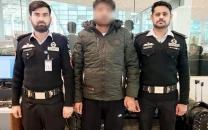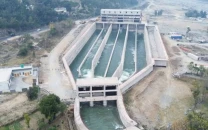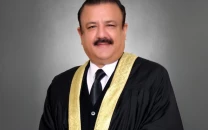Did no one kill Saleem Shahzad then?
The Commission's inquiry report manages to raise more questions than answering the existing ones.

Did no one kill Saleem Shahzad then?
Instead of an impartial inquiry, one might have expected the report presents the image of a witch-hunt and indulges in voodoo magic to preserve the soul of Pakistan’s premier intelligence agency. The Commission was primarily tasked to identify the perpetrators of the crime and shed light on circumstances leading to it. It ostensibly fails to deliver on both counts as it manages to raise more questions than answering the existing ones.
The singular most striking aspect that becomes evident from even a casual reading of the report is the Commission’s cynicism towards journalists and the Human Rights Watch (HRW), which was remarkably in contrast with its gullible attitude towards the intelligence community and its visible lackeys, pretending to be journalists. While it seemed that the inquiry was expecting the journalist community to present nothing short of a smoking gun, two of the three major intelligence agencies were let go upon producing written statements.
Even in the ISI’s case, only Rear Admiral Adnan Nazir was cross-examined at length, and that, too, to the effect that a case is built almost in his favour. And while Mr Ali Dayan of HRW was subjected to rather gratuitous questions about his organisation and work, redoubtable testimonies of self-proclaimed journalists like like Zafar Mehmood, Sheikh Qamarul Munir alias Qamar Yousafzai and Muhammad Raashed were accepted at face value without going into details of their professional competence. This apparently is because the testimony of these gentlemen supported the ISI’s narrative apart from casting aspersions on Shahzad’s person.
Shahzad’s book, Inside al Qaeda and Taliban (Pluto Press, 2011), has raised serious concerns on the failure of counter-intelligence. When he claimed that Ilyas Kashmiri had influenced some serving and retired officials in the armed forces, did it not become essential to probe whether such al Qaeda moles could have killed him to maintain their cover.
Another glaring omission in the structure and functioning of the Commission was the absence of a dedicated forensic expert and an investigator. In the absence of either, the Commission could expect to be stalled and that is precisely why it had to crack open Shahzad’s email account on its own. Quite astoundingly, it does not make much of the fact that the authorities did not provide much cooperation.
Also, it makes one wonder that the Commission quite clearly did not consider, even remotely, the possibility that the victim’s family might have contradicted Ali Dayan’s version under duress or because of it may have received actual threats. People who recovered the body or had something to do with the discovery were either not probed in detail, or else the account was not worthy of a mention in the report.
The fact remains that Pakistan has a long history of such crimes. Please remember the names of Daniel Pearl, Wali Babar, Moosa Khan Khel, Hayatullah Khan, Umar Cheema and Faraz Hashmi. No conspiracy theory about the seemingly ubiquitous ‘foreign hand’ can hide this fact.
In the end, the Commission does at least one generous thing — that of recommending the release of the three million rupees pledged to the family of the victim. But it should have gone a bit further and recommended that the family of the victim should be shifted abroad as this state and its justice system cannot ensure security for the life and property of journalists.
Published in The Express Tribune, January 31st, 2012.













COMMENTS
Comments are moderated and generally will be posted if they are on-topic and not abusive.
For more information, please see our Comments FAQ